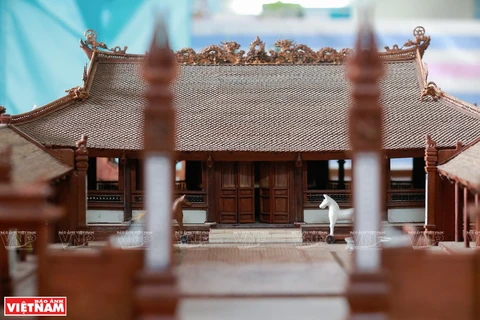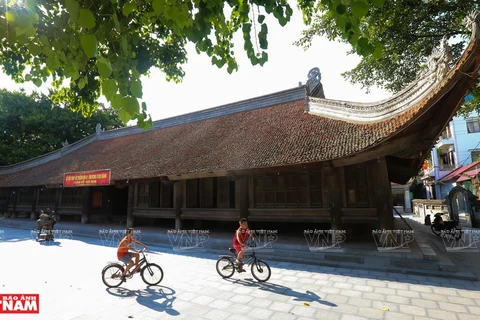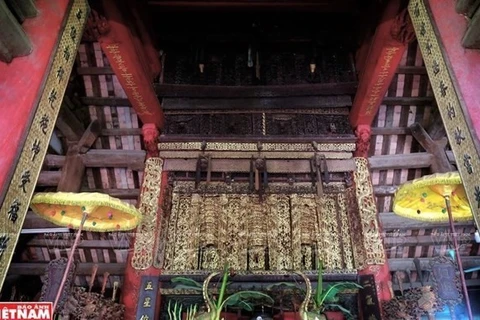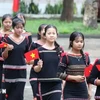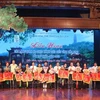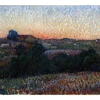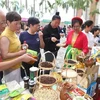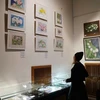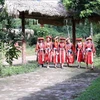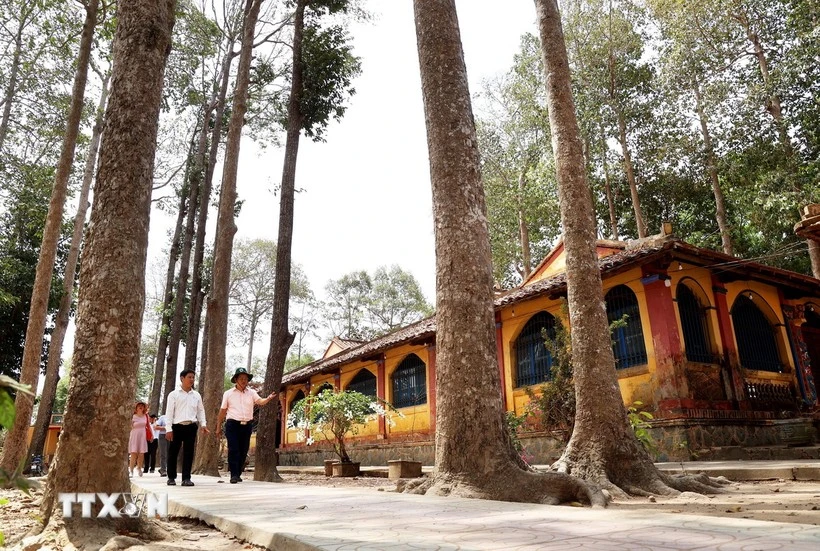
Ben Tre (VNA) – Tucked away in the serene countryside of Vietnam's Mekong Delta, the Phu Le communal house stands as a tribute to nearly two centuries of history and architectural prowess in Ben Tre province.
Recognised as a national architectural art relic site in 1993, this remarkable structure is one of the most prominent examples of its kind on the Bao islands, with locals proudly asserting the importance and grandeur of the "First Phu Cuong, Second Phu Le".
The grand structure, adorned with intricate carvings both inside and out, offers a glimpse into the region's opulent past.
Erected in 1826 under the reign of Emperor Minh Mang, the Phu Le communal house has withstood the tests of time and conflicts, retaining an ancient charm that transcends its years. It was built to replace an earlier wooden and thatched structure, with a platform and foundation crafted from slabs of green rocks, and brick walls erected atop.
The house comprises of 10 compartments arranged in a traditional "Dinh" Chinese letter shape, commonly seen in the Mekong Delta of old days. The six main compartments feature attached roofing, while the four auxiliary compartments flank them. The columns, made of rare lim (ironwood) from Vietnam's southwestern region and measuring 40 cm in diameter, support a roof adorned with tiles in the shape of fish scales.
Inside, the six incense altars, lacquered and gilded with mythical creatures and local fauna, evoke the traditional patterns of ancient Vietnamese temples and pagodas. The multi-layered wood carvings surrounding the columns in the main hall showcase the artisans' extraordinary skill, depicting the Four Sacred Animals of ancient Vietnamese culture alongside native fish and crab motifs.
Legend has it that local elders invited craftsmen from Hue to create these exquisite carvings, seamlessly blending coastal creatures into the architectural design. The result is a grandeur and majesty that mirrors the prosperity and cultural richness of Phu Le residents and the Ba Tri area during the early 20th century.
Despite the toll of war and time, the fundamental architectural elements of the Phu Le communal house remain intact. The ornate wood carvings, lacquered and gilded, still stand proud, and meticulously preserved for future generations.
The Phu Le communal house transcends its historic significance, serving as a spiritual heart of the local community. Here, villagers express their hopes and wish to the guardian deity, officially recognised as the "Thanh Hoang Bon Canh". Annual festivals, such as the "Ky Yen" and "Cau Bong" celebrations, attract visitors with their vibrant processions, rituals, and performances of "hat boi" and "cai luong". These are cultural expressions typical of the Mekong Delta region.
The "Ky Yen" festival, held on the 18th and 19th days of the third lunar month, prays for favourable weather. Meanwhile, the "Cau Bong" festival, which takes place on the 9th and 10th days of the 11th lunar month, prays for a bountiful harvest. Both festivals feature ceremonies honouring the guardian deity and the village's founding ancestors, along with offerings to the pioneers who drove the village's development.
On January 7, 1993, the Ministry of Culture and Information officially recognised the Phu Le communal house as a national historic-cultural site. Today, it draws tourists eager to explore not just the house, but also the local traditional craft villages that surround it.
The Phu Le Communal House is more than a destination. It's a journey through time, a celebration of culture, and a testament to the enduring spirit of the Mekong Delta. It stands as an invitation to explore Vietnam's rich history and cultural heritage, an offer that's hard to resist./.
